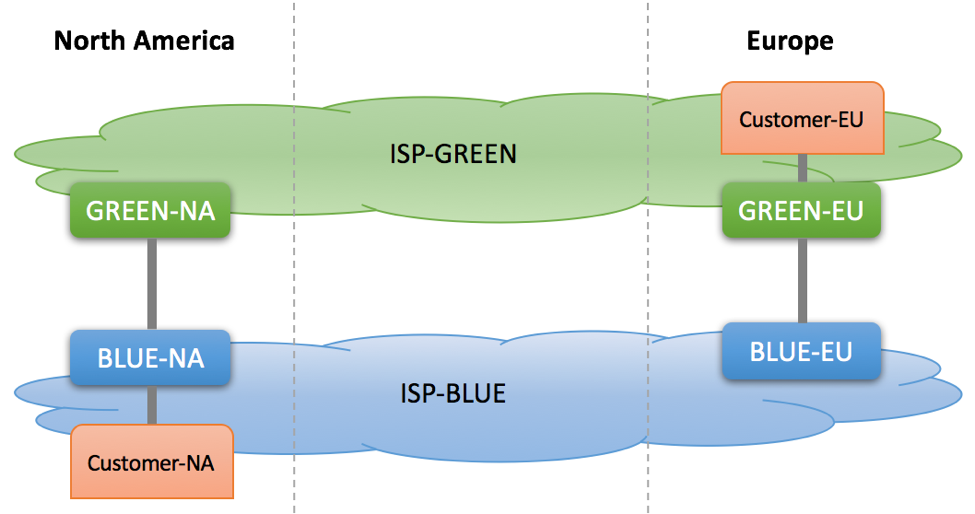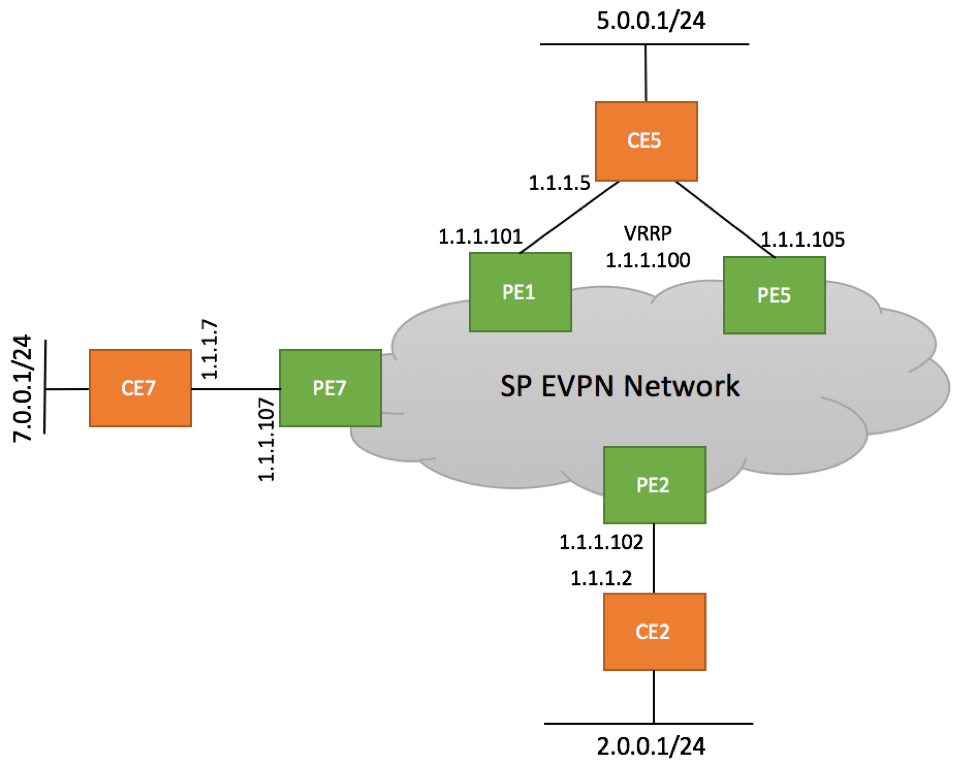Hot Potato and Cold Potato are two practices of exchanging traffic between BGP Peers. The difference in these two methods is in the approaches to how to carry traffic across the network.
Hot Potato vs Cold Potato discussions are only relevant in the scenarios where multiple traffic exchange (peering) points exist between two networks.
In our example, we will use the following diagrams depicting two networks spanning across North America and Europe.
We are interested in the traffic flow that is originated by Customer-NA connected to ISP-BLUE and is destined to Customer-EU connected to ISP-GREEN.



